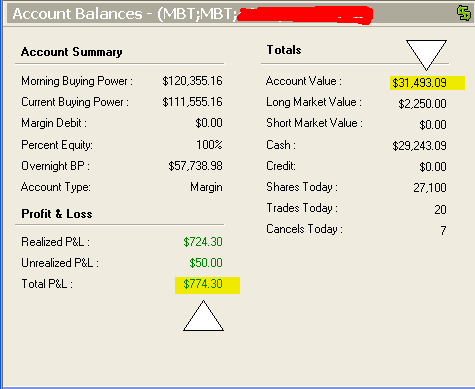During a series of personal mentoring sessions with one of our members, it became clear that he struggled with the implementation of the SEC’s $25,000 Pattern Daytrading Rule. This is a common plight of many beginning traders, but one that we’ve helped several traders with. His account balance was meandering around this $25,000 barrier, but each successive stop loss would inevitably take him under $25,000. The inability to utilize margin would only allow him to trade the long side only, in addition to limiting the amount of trades he could trade in a given period.
After his account was reduced as low $23,000, he requested that we change our approach for mentoring sessions to a different scenario. We decided that he would stop trading for a while and observe what I would do in similar situations. I’ve discussed with him numerous times that my experience of recovering from heavy losses in the past could only benefit him as an example of what processes must be done in order to regain a desired performance result. Upon his request, I had no doubt I would be able to reproduce similar results for his account.
The terms we set for this experiment were based on the premise that I would take a similar account to $30,000, which was the amount that he considered to be safely removed from that dangerous $25,000 barrier. This way he could endure some stop losses without losing his margin. The idea was to study my style of trading skills and mindset that would allow him to emulate these skills in order to remain above the $25,000 limit with confidence. This in turn allows him to refocus his efforts on increasing his account balance through proper trading techniques, rather than focusing on losing too much that he would be under $25,000.
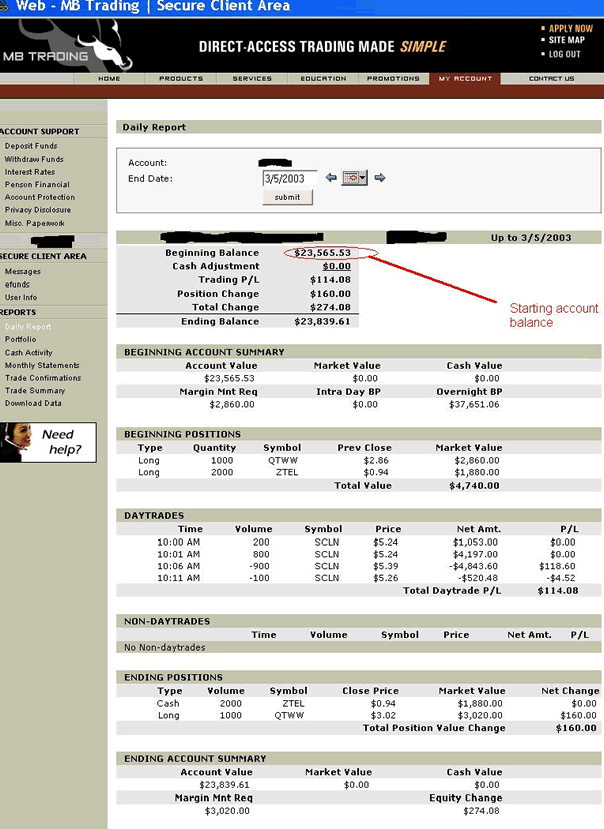
The snapshots of the account balance and trading activity will take you through the last couple of months that we did this program. The personal information (account number, username, etc) has been blanked out for the account’s privacy reasons. We offer these in order to describe how the program can help those who struggle with a similar problem to work out their strategy.
During the initial implementation of this program, I faced a necessity to choose between approaches. The first was to try and hit several swing trades targeting gains measured in thousands of dollars. This would be the fastest way of recovery. However, there were certain downsides to this approach. The biggest caveat of them was the risk of bigger stops that come naturally with this trading style. Being almost $2,000 away from $25,000, it was very undesirable. Also, the market at the moment was making nervous movements with a highly liquid geopolitical situation. Swing trades carried very high risk and what I considered to be too high for this situation.
Therefore, I decided to go with another approach. This approach is one that I consider the best for recovery after a losing streak or heavy loss. This approach requires very careful scalping, with a slow but steady consistency of the account balance. This approach is described in our online course under the title of "Recovery After Losing Streak". The idea was to limit the risk as much as possible. It meant to take small gains, not letting even small profits evaporate. The next two snapshots will give you an idea of how painfully slow it was.
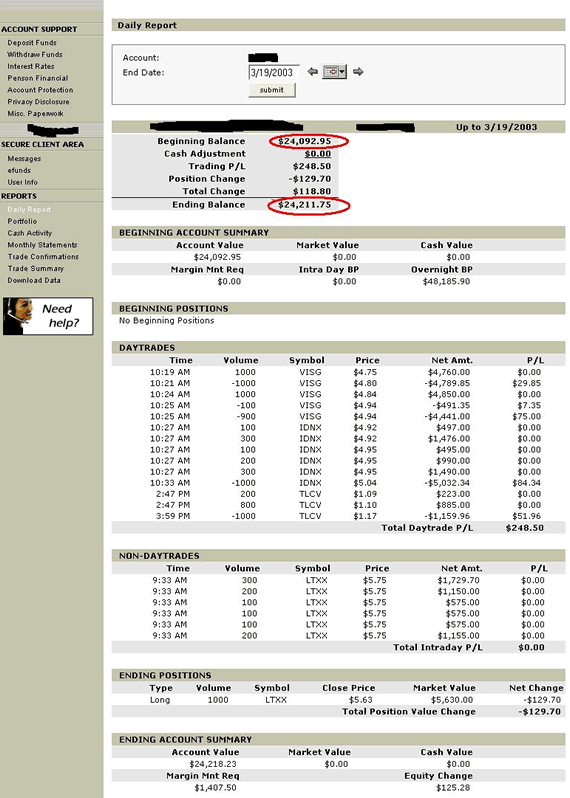
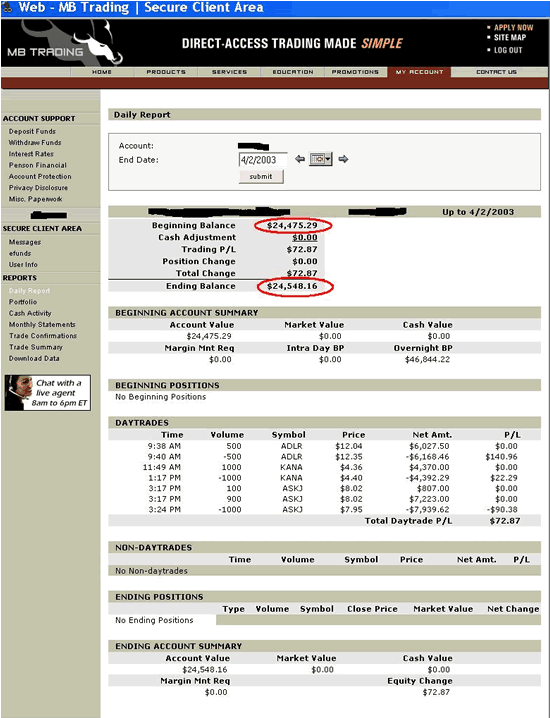
The biggest drawdown through the entire event was limited to $400 for the day. It's slightly less than 2% of the account value. The drawdown for any single trade was even less, $200, less than 1%. I wanted to stick to this extremely careful approach while the account was under $25,000 and up to the moment it would reach 27,000. This way I would slightly increase the risk only when the dreadful barrier was safely behind me. Finally, the account crawled into margin zone:
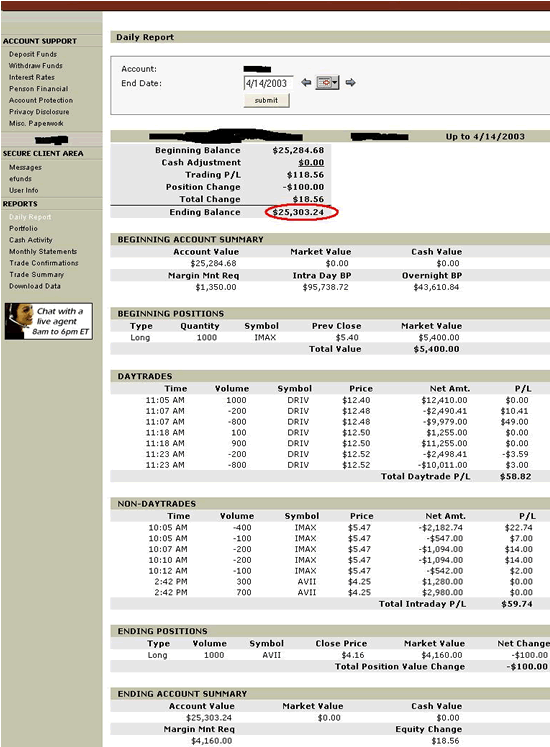
It was imperative now to stay with the same strategy for a while. I remembered the saying "when we become successful we tend to stop doing what made us a success in a first place". Until the account was removed from $25,000 far enough, I could not afford a bigger risk. I believe my service running obligations and personal mentorship were also factors that added to the slowness. This could probably be done faster by a trader who was devoted solely to trading. Anyway, the painfully slow crawling continued:
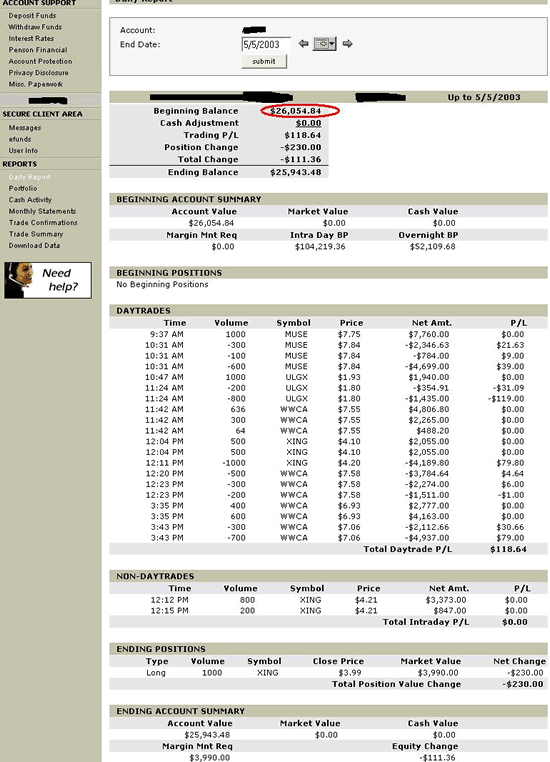
Click here for more information about Realitytrader's Mentoring Program
As soon as the account hit $27,000, I allowed myself to trade a with more exposure. The stops were kept within $250 still, but I was not that eager to take any profit available. I let them develop and the account balance began to increase at a faster rate. Even though some of my winning trades slipped away, ending up flat or with small loss, those winners that got a chance to grow offset them. This brought more confident movement toward the target of $30,000.
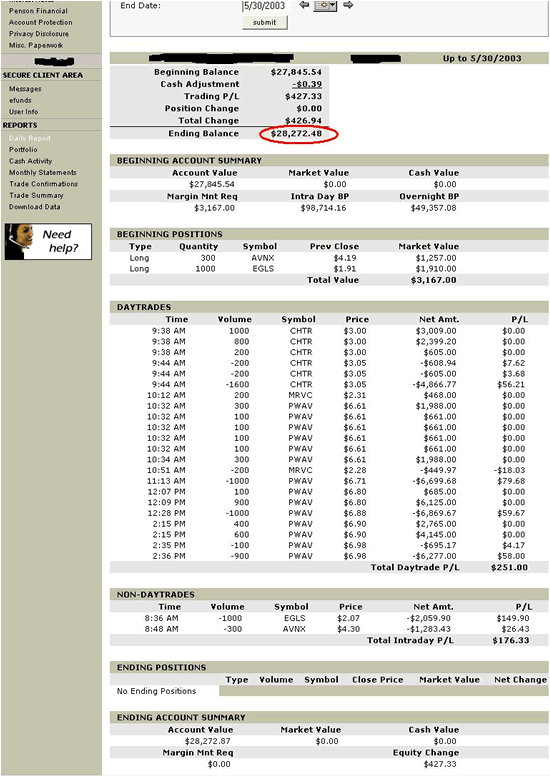
As you can see, the next move to just under $30,000 is made in just a week. Risk control is still strict but the gains taken are increasing gradually.
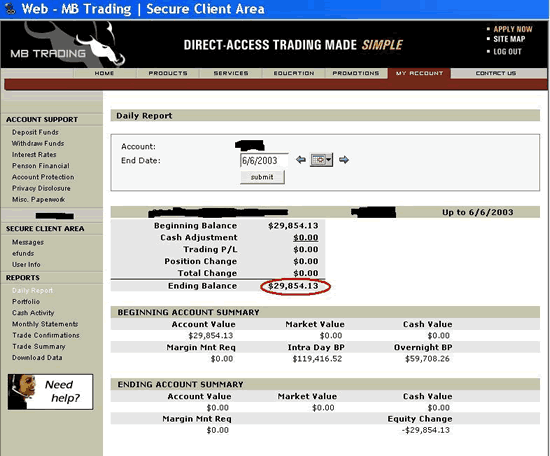
Click here for more information about Realitytrader's Mentoring Program
This overview shows the methodology that can be applied for this unfortunate and common situation. As much as this rule limits a trader's options, it's still possible to overcome the artificial obstacle implemented by the SEC. The idea of slow gains collected by scalping can be applied with the right software and commissions' schedule. We consider per share fee by MBTrading perfect for this. There is a strict discipline required for this approach. A trader’s patience will be challenged due to the agonizing slow advance. However, this is very good practice and a solid program that we can help you with.
P.S. To finish the story, look at this balance captured 6/11. Notice how much faster the account moves and how daily profits grew bigger now that the pressure of "can't afford to lose" is off.
